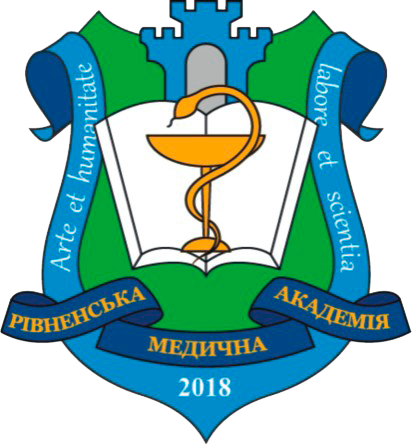PECULIARITIES OF THE SOMATIC STATUS OF THE ELDERLY ADULTS WITH ADENTIA AS A JUSTIFICATION FOR THE SPECIFICITY OF GERIATRIC REHABILITATION
DOI:
https://doi.org/10.32782/health-2024.2.26Keywords:
geriatrics and gerontology, geriatric syndromes, rehabilitation, adentia, maxillofacial region, dental dysfunctions, malnutrition, risk of falling.Abstract
Purpose – to study the peculiarities of the course of geriatric syndromes (malnutrition, senile asthenia (frailty), risk of falling) in elderly people with secondary adentia and the possibility of their correction by means of physical therapy. Materials and methods. 42 elderly people with secondary adentia were examined. The comparison group consisted of 13 people whose dental defects were compensated by dental prosthetic structures. The basis of the group consisted of 29 people with uncorrected incomplete secondary dentition. The main group 1 consisted of 15 people in whom the number of lost teeth was less than 16 available; main group 2 – 14 people with more than 16 missing teeth. The rehabilitation intervention lasted 3 months, consisted of nutritional correction of malnutrition, therapeutic exercises for facial and masticatory muscles, tongue, neck, breathing exercises, balance training, strength coordination with the use of progressive training with using Thera-Band expanders for 3 months. The results of the intervention were evaluated by Oral Health Impact Profile-14, Mini nutritional assessment, Short Physical Performance Battery, hand dynamometry, Berg Balance Scale. Results. The use of the rehabilitation program led to a decrease in the severity of malnutrition (according to the Mini nutritional assessment), an improvement in strength (according to hand dynamometry), balance (according to the Short Physical Performance Battery), a decrease in the risk of falling (according to the Berg Balance Scale), but did not lead to an improvement in the quality of life, related to dental health (according to the Oral Health Impact Profile-14). The amount of adentia (the number of lost teeth) negatively affected the severity of geriatric syndromes. Conclusions. Taking into account the physical, mental, social and financial characteristics of elderly patients, the implementation of dental prosthetics to reduce the severity of malnutrition is not always available, increasing the risk of geriatric syndromes and increasing the need for motor correction of their consequences. Rehabilitation of elderly patients with adentia should be long-term and multidisciplinary – involving not only dentists, but also motor rehabilitation specialists.
References
Cruz-Jentoft A.J., Bahat G., Bauer J., Boirie Y., Bruyère O., Cederholm et al. Sarcopenia: revised European consensus on definition and diagnosis. Age Ageing. 2019. № 48 (1). Р. 16–31. DOI: 10.1093/ageing/afy169.
Fávaro-Moreira N.C., Krausch-Hofmann S., Matthys C., et al. Risk Factors for Malnutrition in Older Adults: A Systematic Review of the Literature Based on Longitudinal Data. Adv Nutr. 2016. № 7 (3). Р. 507–522. DOI: 10.3945/an.115.011254.
Aravitska Mariia, Saienko Olesia. The influence of physical therapy on indicators of locomotive syndrome in elderly persons with osteoarthritis of the knee and obesity. Clinical and Preventive Medicine. 2023. № 4. Р. 6–13. https://doi.org/10.31612/2616-4868.4(26).2023.01.
Martins A.M.C., Guimarães L.S., Campos C.H., et al. The effect of complete dentures on edentulous patients' oral health-related quality of life in long-term: A systematic review and meta-analysis. Dent Res J (Isfahan). 2021. № 18. Р. 65.
Banerjee R., Chahande J., Banerjee S., Radke U. Evaluation of relationship between nutritional status and oral health related quality of life in complete denture wearers. Indian J Dent Res. 2018. № 29 (5). Р. 562–567. DOI: 10.4103/ijdr.IJDR_285_17.
Shen J., Qian S., Huang L., et al. Association of the number of natural teeth with dietary diversity and nutritional status in older adults: A cross-sectional study in China. J Clin Periodontol. 2023. № 50 (2). Р. 242–251. DOI: 10.1111/jcpe.13728.
Koval Nazar, Aravitska Mariia. Dynamics of kinesiophobia and physical functioning parameters in the elderly adults with sarcopenic obesity under the influence of the physical therapy program. Clinical and Preventive Medicine. 2023. № 4. Р. 88–95. DOI: https://doi.org/10.31612/2616-4868.4(26).2023.13.
Venegas-Sanabria L.C., Moreno-Echeverry M.M., Borda M.G., Chavarro-Carvajal D.A., Cano-Gutierrez C.A. Oral health and self-rated health in community-dwelling older adults in Colombia. BMC Oral Health. 2023. № 23 (1). Р. 772. DOI: 10.1186/s12903-023-03401-4.
Petronis Z., Spaicyte N., Sakalys D., Januzis G. Functional Rehabilitation after Mandibular Fracture – A Systematic Review. Ann Maxillofac Surg. 2022. № 12 (2). Р. 197–202. DOI: 10.4103/ams.ams_99_22.
Yuan J.Q., Lv Y.B., Kraus V.B., et al. Number of natural teeth, denture use and mortality in Chinese elderly: a population-based prospective cohort study. BMC Oral Health. 2020. № 20 (1). Р. 100. DOI: 10.1186/s12903-020-01084-9.
Chauncey H.H., Muench M.E., Kapur K.K., Wayler A.H. The effect of the loss of teeth on diet and nutrition. Int Dent J. 1984. № 34 (2). Р. 98–104.
Choong E.K.M., Shu X., Leung K.C.M., Lo E.C.M. Oral health-related quality of life (OHRQoL) after rehabilitation with removable partial dentures (RPDs): A systematic review and meta-analysis. J Dent. 2022. № 127. Р. 104351. DOI: 10.1016/j.jdent.2022.104351.
Slade G.D., Spencer A.J. Development and evaluation of the Oral Health Impact Profile. Community Dent Health. 1994. № 11 (1). Р. 3–11.
Vellas B., Villars H., Abellan G., et al. Overview of the MNA-Its history and challenges. J Nutr Health Aging. 2006. № 10 (6). Р. 456–465.
Berg K.O., Wood-Dauphinee S.L., Williams J.I., Maki B. Measuring balance in the elderly: validation of an instrument. Can J Public Health. 1992. № 83. Р. 7–11.





